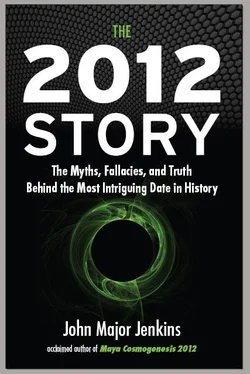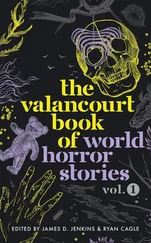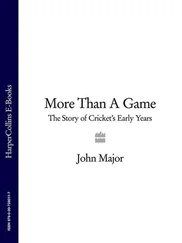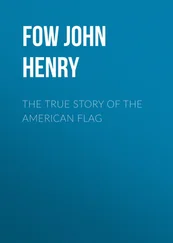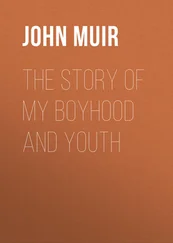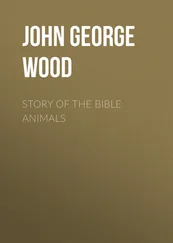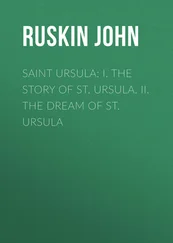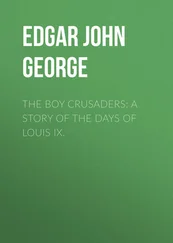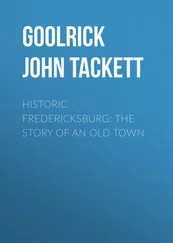As a writer, this concerns me. In my youth I produced my own books. I enjoyed designing intricate book covers and page content, then going to Kinko’s with it. My original self-published version of my book Tzolkin , of which I sold an edition of sixty copies, contained forty pages of fold-out calendars and a color day-sign chart. This was well before my letterpress interest blossomed in 2007. Throughout my writing career, in retrospect, it seemed that my more creative side was being eclipsed by the editorial mandates and design limitations of the commercial publishing world. So my escape was to save one of the monstrous Chandler & Price platen presses from the scrap yard. Reviving the ancient art of letterpress printing was not unlike reviving the lost cosmology of the Maya.
I was surprised to find a community of like-minded printing enthusiasts who were happy to initiate me into the Black Art. Stevyn and I wrestled with a ton of iron, loading up a rental truck with “the beast” and other paraphernalia. I strategized a work space in my one-car garage and even got some tips from Lloyd O’Neil, the master printer in Denver, who was folding up his shop after fifty years. There aren’t too many of these around anymore; almost all of them have now succumbed to offset and digital printing. What I love about this is that without once plugging into the grid you can produce a book-as-art, just as medieval illuminated manuscripts were a feast for the senses and an invitation to go deep into an experience that the book’s contents could trigger. Sacred art was designed to transport the viewer into a state of consciousness that could directly apprehend the mysteries they symbolized. So, too, a book could open up vistas beyond the surface meaning of words printed on a page.
My little print shop has opened new relationships in my community with artists, designers, other letterpress fans, authors, and poets. Everyone was excited about the underlying motivation and value that the enterprise creates. And they met it with innovative new enterprises of their own. Our entire American culture is feeling a deep upwelling urge to turn the boat around, to begin doing things differently than our culture wishes us to do. Conspicuous consumption can be rebuffed with creative generosity, dog-eat-dog economics can be mitigated by community-based sharing; dominating others can be diffused by building mutually beneficial partnerships. 15
These are all real things that real people can do. My brother Bill lives on the outskirts of Los Angeles in a little urban valley where chickens and coyotes dwell. His hillside property contains some open land and two small houses. He devised his own system of powering his needs with solar panels, with a minimal investment. Today, his roof is covered with them and he feeds surplus energy back into the grid. He is starting to grow corn and other crops. But he isn’t some back-to-nature nonconformist—he works as a soundman for movies. He has created a sense of independence from the endless niggling ways that the matrix seeks to deceive us and suck our money, time, and energy away, to be used for its own profit.
I live in northern Colorado, where a great deal of innovative sustainable living practices are being developed. My own “bliss following” merged with others doing their own bliss following, and I believe this is the way through to a healthy future. It comes out of the heart to transform the culture; the larger institutions of society must be transformed by grassroots change. I now see myself as belonging to a community network of farmers, beer brewers, solar panel innovators, wind-power pioneers, alternate-fuel inventors, poets, musicians, writers, artists, festival organizers, traders, and health-food entrepreneurs. All are more than willing to divest the chimp and awaken the dormant partnership style of culture that has been submerged like some sleeping Atlantis under the illusory world of Seven Macaw. This, I believe, is the Maya renaissance writ large, the transformation of colonial values of territorial domination into the archaic partnership value of sustainable community-building. The guiding rudder of this process is the nurturing of higher consciousness, of reconnecting our little selves with the whole. In a time of global crisis, consciousness is the ultimate adaptive strategy.
In this chapter I outlined three methods for connecting with the big picture, each of which has an initiatory focus and intention. Importantly, there is one key to the effectiveness of any method one chooses to employ: None of these methods work without the humble attitude of self-sacrifice, or ego transcendence. It is often noted that “humiliation” is a central part of traditional initiation rituals, which is a term applied to the ceremonies by modern anthropology. It’s a loaded word, a value-judgment term, which is inherently biased and misleading. The inner experience of what is labeled “humiliating” might actually be one of freedom, a liberating exaltation. Things look very different when you see things from the inside with the eye of the heart, not from the externally directed ego. The Big Picture appears when correct spiritual relationship between ego and Self is restored. The crisis of the modern world is an outward projection of a wrong state of affairs within the soul of humanity. This is fundamentally an inner work. Simultaneously, the outer work of political reform, cultural renewal, and innovative community-based solutions for food, fun, and energy can be pursued. But that outer work is most effective when inner progress is happening.
CHAPTER THIRTEEN
After the Party
Finish it.
—IZZI CREO,
The Fountain 1
This has been a guide through the many varied aspects of the 2012 discussion, and I hope that facts mixed with food-for-thought have seasoned a soul-stew that satisfies. Despite what the pundits of propriety assert, 2012 has meaning on virtually every level at which it appears. Critics who assert that “it’s all nonsense” are missing the point. Such a statement is misleading—first of all because 2012 is a true artifact of the Maya calendar tradition. It is explicitly recorded on Tortuguero Monument 6, with related inscriptions connecting it to a whole host of meanings and beliefs. If we see 2012 manifesting on the level of spirituality, it can there have meaning too without violating Maya traditional beliefs about cycle endings. If we take a long, hard look at its use on the level of mass media doomsday rhetoric, that has meaning as well, because it reveals the shadow projection of our own culture’s secret worship of death, destruction, and violence. These unhealthy prejudices, linked to a linear-time philosophy of questionable philosophical merit and an atavistic lust for destroying nature, perhaps need to be projected and exposed before healing and wholeness can occur. Our sick civilization apparently needs to use 2012 as a cathartic purge before the higher aspects of the spiritual teachings it points to can be benefited from. And that may simply be the way that it needs to be.
The 2012 date may also be a rallying cry for the indigenous mind and soul to reassert itself on the world stage—among all human beings of all ethnic groups because we are all indigenous to earth. The Maya renaissance, already under way, may just be the spark of a wildfire that may spread around the world, igniting the dormant primordial mind that has been layered over with materialism and abstractions. This renaissance can be phrased in many ways. It is essentially about throwing illusion into the fire of sacrifice, returning ego to its proper place as a satellite of the Divine Self (not the other way around), and awakening a higher consciousness through which the world’s intractable dilemmas can be solved. If, as Terence McKenna said, consciousness does not loom large in the future of the human race, what kind of future is it going to be? And if the awakening of consciousness, a turnabout in the deepest seat of the collective soul, does not occur, then no amount of legislation, electing new leaders, or applying bandages is going to help.
Читать дальше
